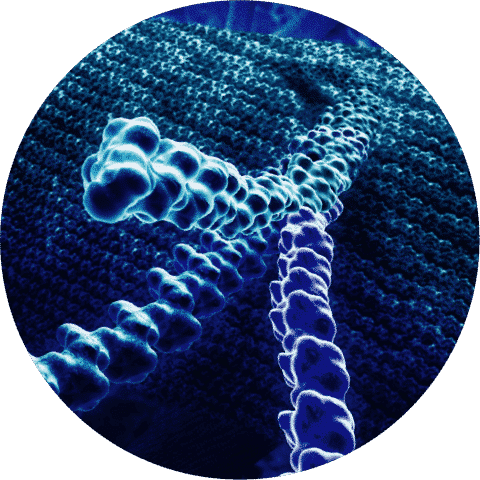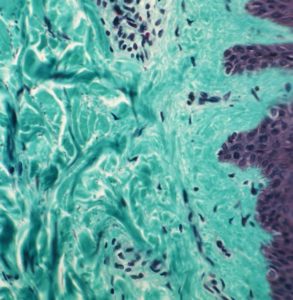The Science Behind Hydrolyzed Type I Collagen Fragments
 The use of collagen to progress the healing of acute, surgical and chronic wounds is well accepted among clinicians. The use of hydrolyzed collagen in these areas presents a unique opportunity based on the science of how collagen is broken down and incorporated by the body.
The use of collagen to progress the healing of acute, surgical and chronic wounds is well accepted among clinicians. The use of hydrolyzed collagen in these areas presents a unique opportunity based on the science of how collagen is broken down and incorporated by the body.
About Type 1 Collagen
Native Type 1 collagen is a large protein molecule that is fragmented naturally as a component of wound healing. This breakdown of Type 1 native collagen occurs by proteinases — such as matrix metalloproteinases (MMPs) — and is an essential and normal component for wound healing and scar formation. The fragments produced as a result of this breakdown (hydrolyzation) are amino acid sequences with active sites indispensable for cell membrane binding to cells such as fibroblasts.
How the Body Uses Collagen
 Collagen-derived fragments are involved in multiple cellular functions, including cell shape and differentiation, migration, and synthesis. The fragment-attachment sites are chemotactic for a variety of cells responsible for creating granulation tissue. These exposed amino acid fragments are much smaller in size than native collagen. The process of hydrolyzing collagen into fragments for commercial applications is proprietary since the specific process of hydrolysis can affect not only the size of the fragments, but also the physiochemical and biological properties of the end product.
Collagen-derived fragments are involved in multiple cellular functions, including cell shape and differentiation, migration, and synthesis. The fragment-attachment sites are chemotactic for a variety of cells responsible for creating granulation tissue. These exposed amino acid fragments are much smaller in size than native collagen. The process of hydrolyzing collagen into fragments for commercial applications is proprietary since the specific process of hydrolysis can affect not only the size of the fragments, but also the physiochemical and biological properties of the end product.
To learn more about surgical and wound care products that contain hydrolyzed collagen, visit: CellerateRX® Surgical Hydrolyzed collagen | Sanara MedTech Inc.
References:
David Brett. A Review of Collagen and Collagen-based Wound Dressings. Wounds. 2008;20(12):347-356. Jeffrey J. Metalloproteinases and tissue turnover. Wounds. 1995;7(Suppl A):13A-22A.
León-López A, Morales-Peñaloza A, Martínez-Juárez VM, Vargas-Torres A, Zeugolis DI, Aguirre-Álvarez G. Hydrolyzed Collagen-Sources and Applications. Molecules. 2019;24(22):4031.




